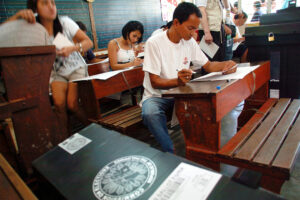MANY Filipino voters believed that government officials from political dynasties tend to be more corrupt, yet a huge chunk of voters thought there was nothing wrong with candidates from the same family running in elections, according to a WR Numero Research (WR Numero) survey.
In the WR Numero opinion poll of over 1,700 adults from Sept. 5 to 23, 50% agreed that public leaders from the same families may possibly be more corrupt. It said 16% disagreed, while 31% were unsure.
Metro Manila recorded the highest percentage of residents who agree with political dynasties’ tendency to be more corrupt, followed by South Luzon at 58%, Visayas at 51%, North Central Luzon at 43%, and Mindanao at 40%.
“Most Filipinos across all income classes and self-identified partisanship agree that officials from the same family have a higher propensity to be more corrupt,” WR Numero said.
In the same poll, 56% — mostly from the central Philippines — said there was nothing wrong with candidates from the same family joining elections.
It was most acceptable in the Visayas at 65%, followed by Mindanao at 58%, North Central Luzon at 56%, South Luzon at 51%, and Metro Manila at 46%.
About 30% of respondents said otherwise and 15% were unsure.
In terms of partisanship, the participation of political dynasties in elections was most acceptable among administration supporters at 62%, followed by opposition supporters at 58%, and independent supporters at 56%.
“However, more Filipinos in socioeconomic class ABC disagreed (47%) with the acceptability of nominees running from the same families against those who agreed (37%) in that bracket,” WR Numero said.
“This stands in contrast with the other classes, where the majority in classes D (53%) and E (58%) believe there is nothing wrong with dynasties’ participation in the polls,” it added.
The non-commissioned survey has a margin of error of ± 2% at a 95% confidence level. At the subnational level, the margin of error is ± 6% for the National Capital Region, ± 5% for North and Central Luzon, ± 5% for South Luzon, ± 6% for Visayas, and ± 5% for Mindanao, all at the same 95% confidence level. — Kyle Aristophere T. Atienza
